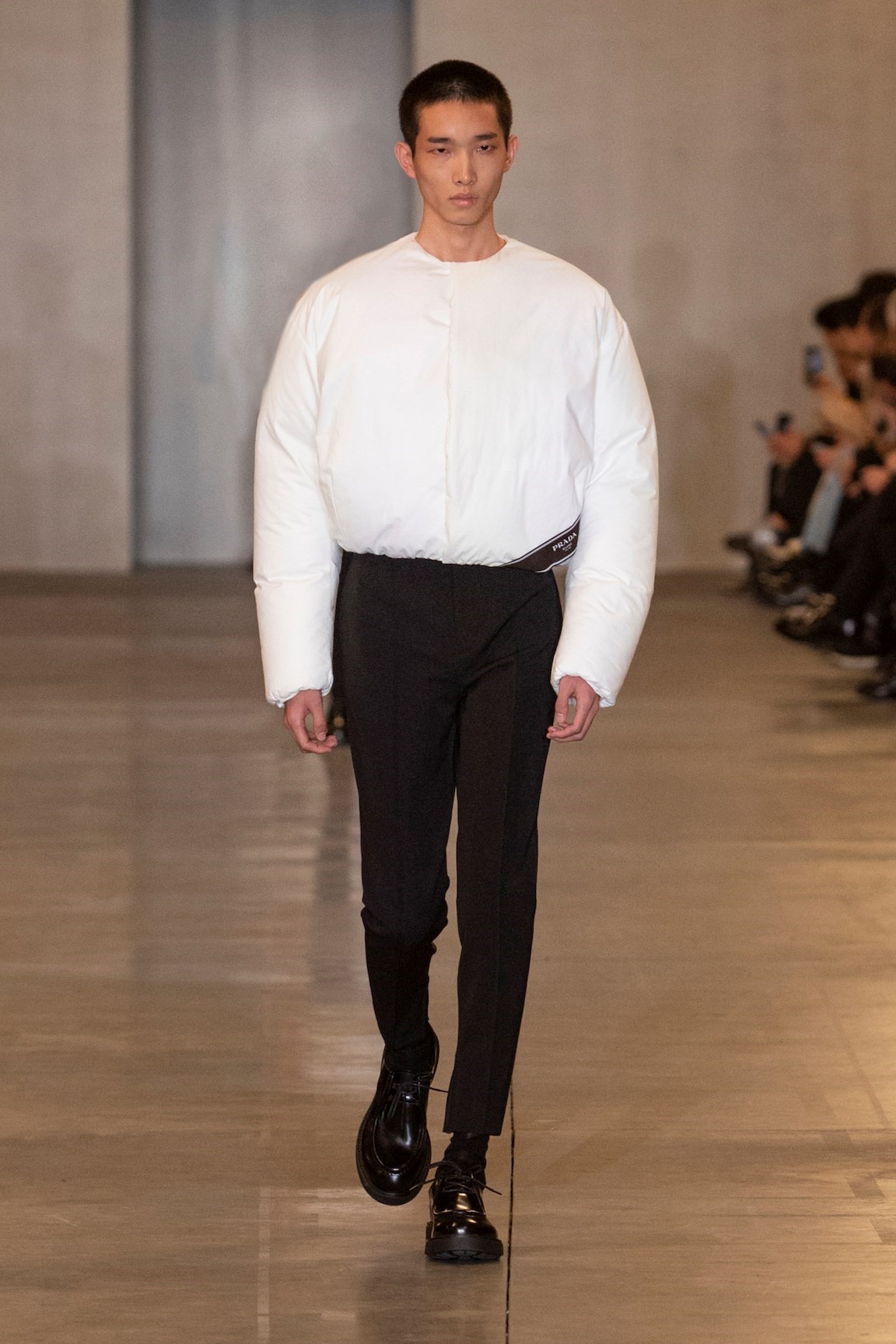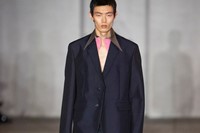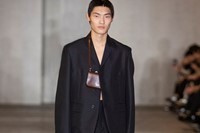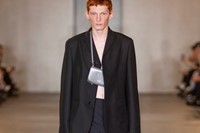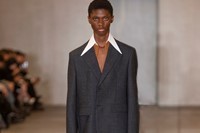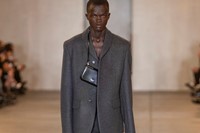Let’s talk about clothes. Was the title of Miuccia Prada and Raf Simons’ Autumn/Winter 2023 menswear collection an entreaty, or an instruction? Or possibly both? Because the collection they presented was, by their own declaration, an exercise in exploring the meaning of clothes, and the reason for being a fashion designer in the 21st century. They didn’t want to discuss business (although it’s booming), nor necessarily geopolitics – although their work is always reflective of that. The focus this time was the clothes on our backs.
That idea, of pragmatic and purposeful fashion, is something that has fascinated both, independently and in partnership, for a number of years. Miuccia Prada’s Autumn/Winter 2020 collection talked about tools of glamour and uniforms of beauty – radical and unexcited interpretations of usefulness where, rather than denigrating the decorative, it was embraced as a necessary component of dress. Simons has explored uniforms and uniformity through collections that sprawl through workwear, city suiting and school garb – it is well-documented that Miuccia Prada used to dress herself from stores that outfitted maids and tailor-made clothes for schoolgirls, before she decided to start making her own clothes. The designers are unified in their search for clothing with real reason for being – “We want to create fashion with a significance and a meaning,” Prada said. “That is the value of fashion today.”
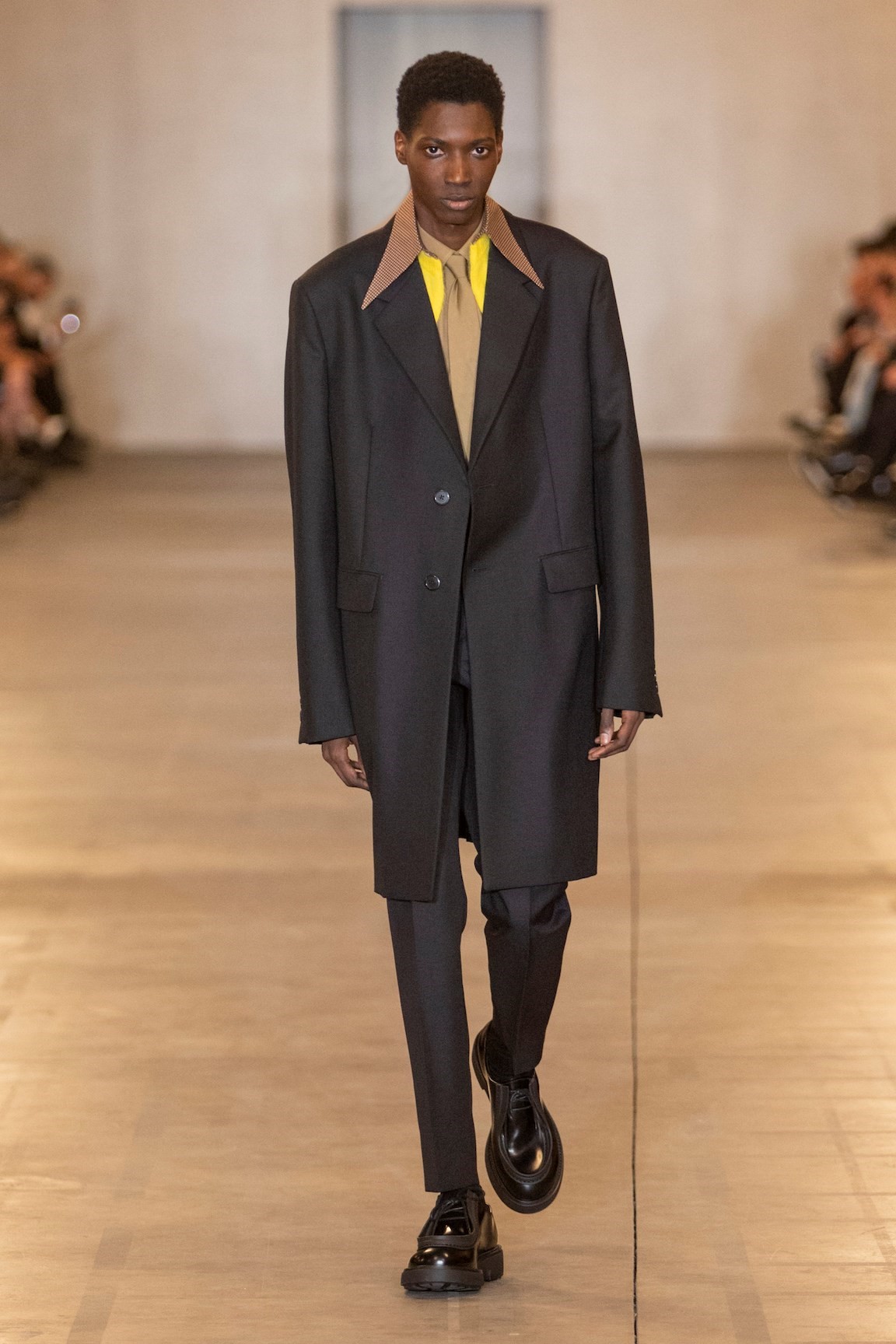
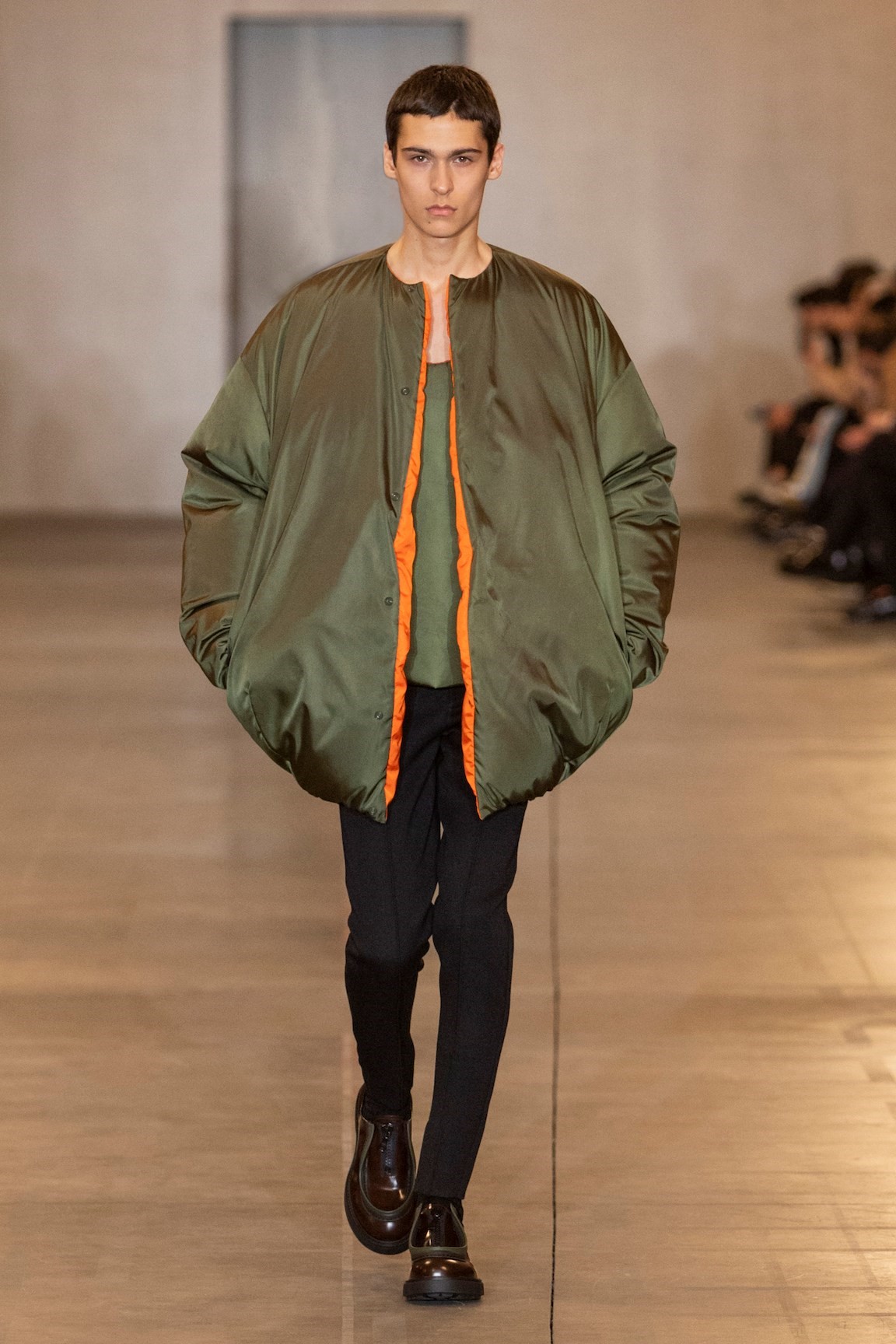
Their Autumn/Winter 2023 built on clothes with a degree of utility, even if that seems like a dirty word. I don’t mean boiler suits, or industrial clothes at all really – rather, glances at skiwear, at the kind of suede used for working aprons, and at the tailored suit. The suit was, really, the lynchpin of the whole thing – which is appropriate, given that it developed into its current form during the industrial revolution, a modernist proposal of clothes for movement. There were also what Simons called “archetypal” pieces, items of a man’s outerwear wardrobe, specifically – the parka, the duffle coat, the bomber jacket. Here, their proportions were played with to give them literal and metaphorical new dimensions. They were either tugged down to oversized ankle-length, or cropped high, while bomber jackets were inflated to bubble around the torso. That toying with proportion had a major echo through the show venue – in the vast expanse of the Fondazione Prada’s Deposito, the entire ceiling rose and fell, revealing grand chandeliers on its ascent and metamorphosing the space from intimate to spectacular.
That idea of expansion and reduction wasn’t just about proportion: for Prada and Simons, there was an expansion of the idea of minimalism and of modernism, contrasting and contradicting it. So there were gestures to warmth and tactility, to exaggeration, to comfort. And there were additions to the rigorous and precise, with fragments of Prada literally pasted to the collars of jackets and cardigans, via snippets of archival-inspired print and fuzzy mohair in intentionally off colours. Simons dubbed them gestures “towards the heritage and history of the brand, and to the meaning of Prada now”. And of course, that is the purpose of these clothes and of fashion too – not just to dress us now, but to show us how the future may look.
